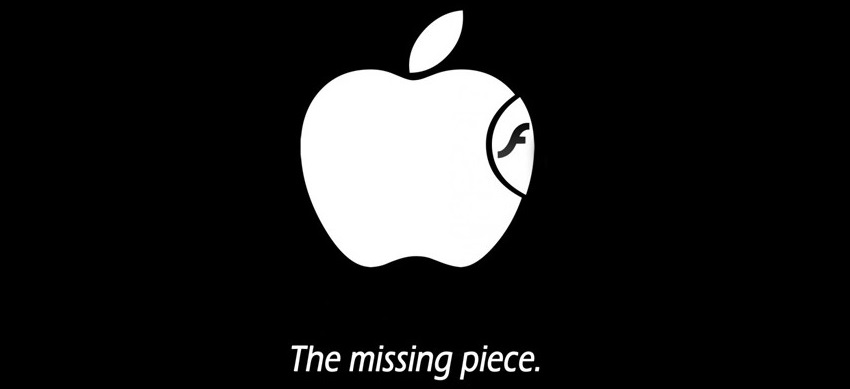Flash has played an important role in the rise of the internet, but it is now a bad choice for any modern web design, and can be detrimental to your search engine optimisation (SEO). On the websites of yesteryear, you would commonly come across animations and videos making use of Flash. Nowadays however, it’s considered a poor choice, and web designers will opt for alternative methods.
But what exactly is it about Adobe’s Flash that makes it a poor web design choice, and why are people sounding the death knell for Flash in 2015 of all years?

Why Firefox blocked Flash by default
Recently, Mozilla announced that Flash had been blocked on their Firefox web browser. There was a very good reason behind why Mozilla, the developer behind Firefox, had chosen to block Adobe’s Flash software on all versions of their web browser.
As it turns out, a number of cyber-criminals were using bugs in Flash to steal the data of users. Mozilla refused to support Flash until Adobe fixed the issues; which it did do. Before it was patched, a security breach of a surveillance software firm named Hacking Team highlighted the risks of Flash. These cyber-criminals adapted 3 unpatched exploits for their own hacking uses.
But that’s not the only reason people want to see Flash come to an end. Security is a big issue, but Flash has many other problems too.
Flushing out Flash
This high-profile banning of Flash on Firefox has reopened the conversion on the future of Flash. And a lot of high profile people have gotten in on the act – even as far back as 2010. And yet, Flash is still here.
Back in 2010, Steve Jobs was calling for the end of Flash in an open letter entitled “Thoughts on Flash”. This was largely down to bewilderment and outrage that the iPad wasn’t Flash-friendly; which was a big thing at the time when the iPad was largely unestablished, and sought to replace our laptops.
Otherwise, Facebook’s security chief Alex Stamos had called out for Adobe to finally leave Flash behind. Many security experts, and internet users in general, would like to see Adobe announce an end-of-life date for Flash, in order for companies and users to adapt to online-life without Flash. This would force the hands of everyone involved, and give enough time that it wouldn’t be a sudden panic.
It seems then, that the internet at large wants to rid itself of Flash. So why is it still so prominent?

Why Flash sticks around
The trouble is, that so much of the internet of the past has been built on Flash, and it takes a while for these practices to get flushed out. Adobe Flash was once the de facto standard for any videos or animations that appear on the web. If browsers stopped supporting Flash across the board, you could find a lot of functionalities on the web are lost.
For instance, I was alerted to this when I tried to use Spotify’s web player on Firefox. Lo and behold, it uses Flash, and it was blocked. It wasn’t difficult to re-enable, of course, but it’s a sign that Flash is still prevalent; even with huge corporations such as Spotify.
But now it seems that the time for the end of Flash is nigh. HTML5-videos are becoming more common, and capabilities to play these are coming built-in with browsers.
But what are the exact reason that makes Flash such a poor choice for web design in 2015?
Why Flash is bad for web design
Flash doesn’t work on mobiles
Chances are Flash will not work on your mobile phone. It’s been a pain-point for a long time now, but with the rise of alternatives, it seems we are going to skip this altogether.
If you have Flash incorporated into your website, then it will simply be unusable on your mobile, or cause a serious amount of frustration to your audience.
When you consider that 60-% of internet traffic is made up of mobile phones and tablets in 2015, then it’s worth considering.
Poor usability
Having an intuitive and usable website is important in attracting and retaining customers; and Flash simply won’t help in this department.
As far as usability is concerned, there’s no way to identify links you can click, it can’t be searched, there’s no way to hit a back button within Flash content, there’s no way to bookmark anything beyond the home screen, and it’s impossible to navigate on a touch screen.
HTML5 is the better choice
YouTube had traditionally used Flash to play videos, but with the rise of video consumption on mobiles, and Google’s buy-out of YouTube, they’ve transitioned over to HTML5.
This didn’t happen overnight, but HTML5 is now the dominant way to watch videos on YouTube. And when Google turns the biggest library of video content on the web from Flash to HTML5, it’s time to pay attention.
HTML5 offers a number of benefits, with the biggest being it works on mobile devices, whilst also boasting better loading times.
Google doesn’t like Flash
From an SEO point of view, Flash is a bad thing to have on your site. Google really does not like Flash. It isn’t supported on Google’s own Android devices, and Google wants to promote better websites in search results. And as Google is such a powerhouse online, it’s best to listen to what Google likes.
Google will actually warn users when they are about to click on a site using Flash from Google, as you can see below:

Which leads onto…
Flash is bad for SEO
SEO is all about content and links, and a website using Flash doesn’t provide these.
Flash doesn’t have any URLs for the separate pages, and doesn’t allow you to monitor outbound links.
Google takes a lot into account, which is why SEO takes attention. Flash-based websites tend to be harder to use, with less content available to Google to index. This all leads to lower rankings, as Google wants to direct users to decent websites, and therefore will give higher rankings to websites that function properly, and give customers what they want.
Load Times
Flash-based sites tend to take a lot longer to load. Nowadays, internet users are more impatient than ever, so it’s important to ensure your site loads as quickly as possible.
If a customer is sat waiting for a page to load, then they may be tempted to hit that back button to Google, and choose a competitor with a faster site.
Security flaws
And of course, the security flaws that were previously mentioned are a clear sign that Flash is a risk in itself.
Flash has always been plagued with reported security issues, but the last security flaws which led Firefox to block Flash by default on all websites until the flaws were patched must finally be the last straw. Now that the public have voiced their opinion, which Adobe must have heard loud and clear, it can’t be long until other browsers, and the internet at large, make a Flash-less internet of the future a reality.
The Alternatives
So if we can’t use Flash on our websites, what are the alternatives, and what are web designers using instead?
Web designers have mostly managed to phase Flash out of their more modern web designs, and it has become more of a relic in the modern internet age. For the most part, you can produce Flash-like elements with Javascript and JQuery.
As it stands, HTML5 has become a much better alternative to Flash, achieving many of the same things but in a far superior fashion. Benefits of HTML5 include:
- Faster loading times
- Cleaner code
- It responds better to the users interactions
- Game development is possible
- All modern browsers support HTML5
- It’s mobile-friendly
- It’s future-proof
Otherwise, web designers have generally stopped using interactive page elements and animations on websites. Carousels or sliders with images often rely on Flash, but there are ways around this. Instead, providing a great user experience with useful content that can be indexed by Google is the best option. “Flashy” Flash animations are simply unintuitive and are no good in this mobile-focused age.
If you have a website that still uses Flash, then it’s a good idea to get a redesign, and bring your website up-to-date. You could be suffering from poor usability, and damaging your search engine rankings. That can all be improved by developing a site without Flash.













